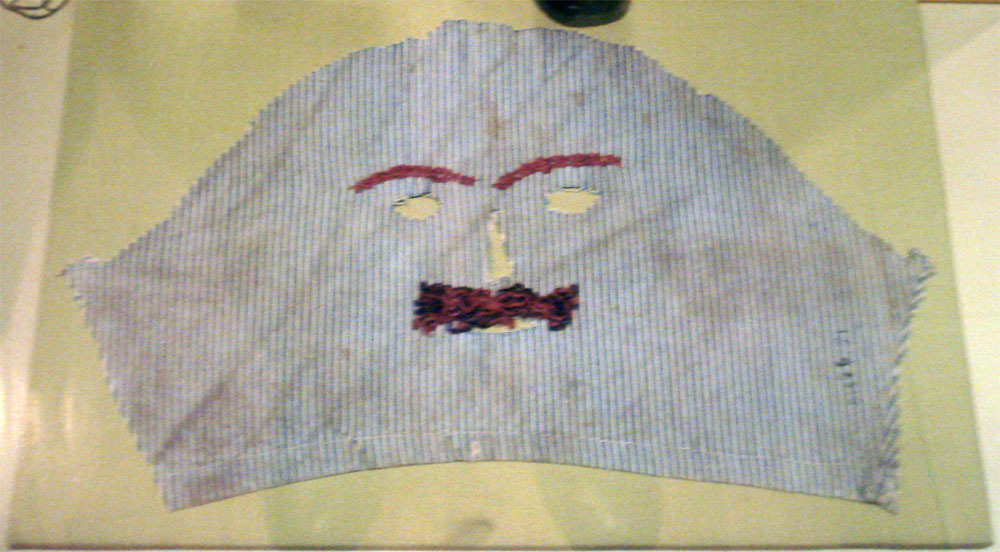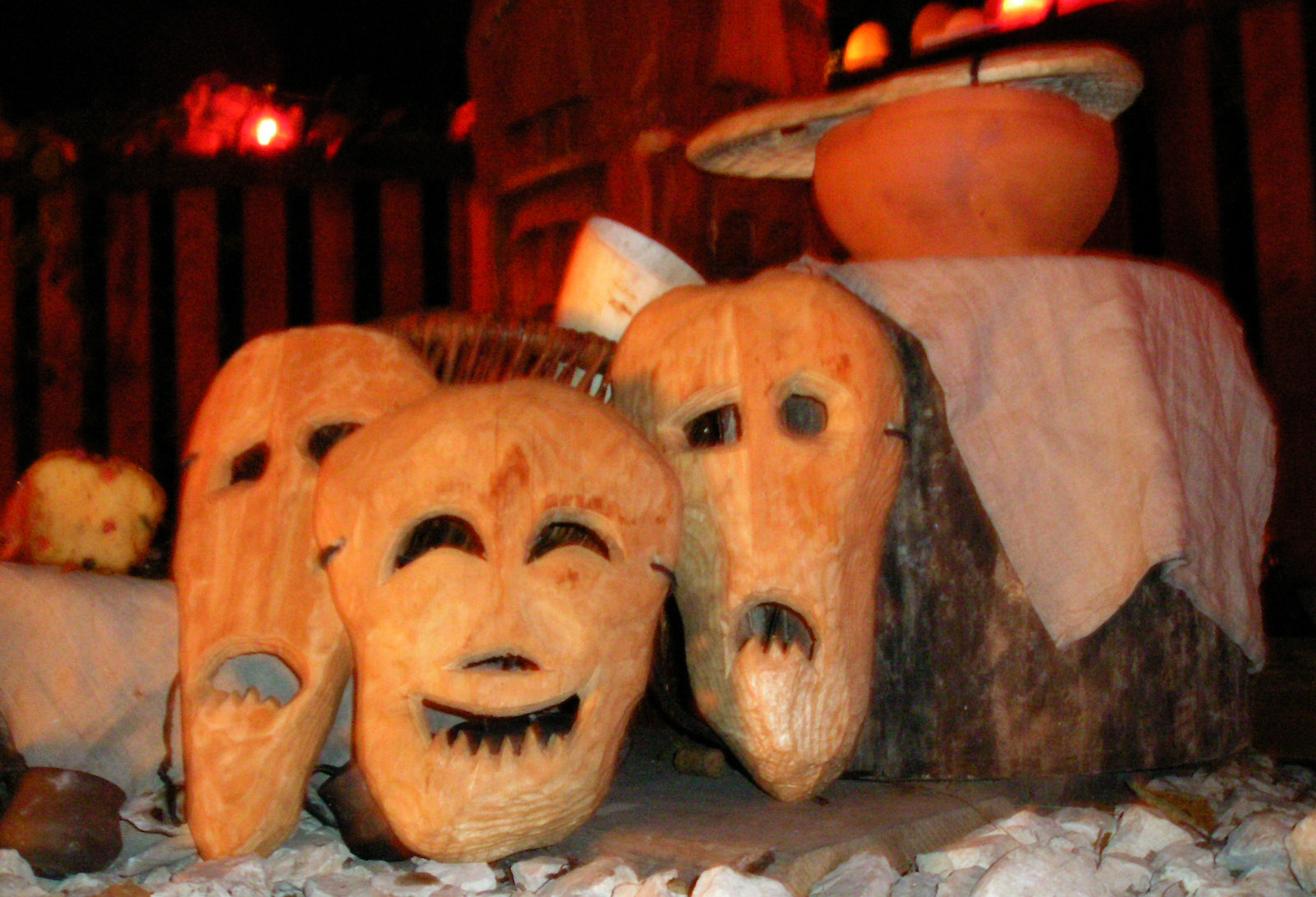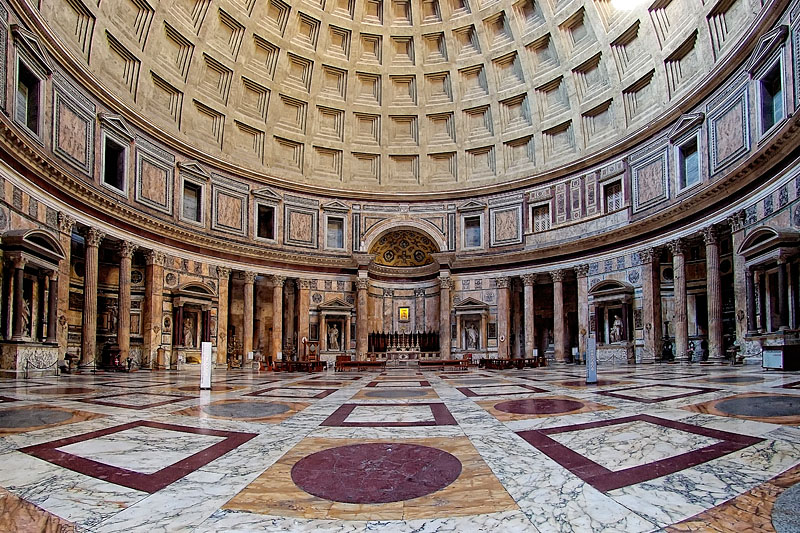|
Lemuralia
The Lemuralia or Lemuria was an annual event in the religion of ancient Rome, during which the Romans performed rites to exorcise any malevolent and fearful ghosts of the restless dead from their homes. These unwholesome spectres, the ''lemures'' or ''larvae'' were propitiated with chants and offerings of black beans. Observance In the Julian calendar the three days of the festival were 9, 11, and 13 May. Lemuria's name and origin myth, according to Ovid, derives from a supposed ''Remuria'' instituted by Romulus to appease the angry spirit of his murdered twin, Remus. The philosopher Porphyry points out that Remus' death was violent, premature, and a matter of regret for Romulus. Toynbee defines ''lemures'' as ordinary ''di Manes'', made harmful and spiteful to the living because "kinless and neglected" in death and after it, having no rites or memorial, free to leave their dead body but unable to enter the underworld or afterlife. A less common but more "mischievous and ... [...More Info...] [...Related Items...] OR: [Wikipedia] [Google] [Baidu] |
All Saints' Day
All Saints' Day, also known as All Hallows' Day, the Feast of All Saints, the Feast of All Hallows, the Solemnity of All Saints, and Hallowmas, is a Christian solemnity celebrated in honour of all the saints of the Church, whether they are known or unknown. From the 4th century, feasts commemorating all Christian martyrs were held in various places, on various dates near Easter and Pentecost. In the 9th century, some churches in the British Isles began holding the commemoration of all saints on 1 November, and in the 9th century this was extended to the whole Catholic Church by Pope Gregory IV. In Western Christianity, it is still celebrated on 1 November by the Western Catholic Church as well as by many Protestant churches, such as the Lutheran, Anglican, and Methodist traditions. The Eastern Orthodox Church and associated Eastern Catholic and Eastern Lutheran churches celebrate it on the first Sunday after Pentecost. The Syro-Malabar Church and the Chaldean Catholic C ... [...More Info...] [...Related Items...] OR: [Wikipedia] [Google] [Baidu] |
Lemures
The were shades or spirits of the restless or malignant dead in Roman religion, sometimes used interchangeably with the term (from Latin , 'mask'). The term was first used by the Augustan poet Horace (in Epistles 2.2.209), and was the more common literary term during the Augustan era, with being used only once by Horace. However, is also uncommon: Ovid being the other main figure to employ it, in his ''Fasti'', the six-book calendar poem on Roman holidays and religious customs. Later the two terms were used nearly or completely interchangeably, e.g. by St. Augustine in ''De Civitate Dei''. The word can be traced to the Proto-Indo-European stem *', which also appears in the name of the Greek monster Lamia. Description ' may represent the wandering and vengeful spirits of those not afforded proper burial, funeral rites or affectionate cult by the living: they are thus not attested by tomb or votive inscriptions. Ovid interprets them as vagrant, unsatiated and potenti ... [...More Info...] [...Related Items...] OR: [Wikipedia] [Google] [Baidu] |
Religion In Ancient Rome
Religion in ancient Rome consisted of varying imperial and provincial religious practices, which were followed both by the Roman people, people of Rome as well as those who were brought under its rule. The Romans thought of themselves as highly religious, and attributed their success as a world power to their collective piety () in maintaining Pax deorum, good relations with the gods. Their Polytheism, polytheistic religion is known for having honoured List of Roman deities, many deities. The presence of Magna Graecia, Greeks on the Italian peninsula from the beginning of the historical period influenced Culture of ancient Rome, Roman culture, introducing some religious practices that became fundamental, such as the of Apollo. The Romans looked for common ground between their major gods and those of the Greeks (), adapting Greek mythology, Greek myths and iconography for Latin literature and Roman art, as the Etruscans had. Etruscan religion was also a major influence, partic ... [...More Info...] [...Related Items...] OR: [Wikipedia] [Google] [Baidu] |
Feast Day
The calendar of saints is the traditional Christian method of organizing a liturgical year by associating each day with one or more saints and referring to the day as the feast day or feast of said saint. The word "feast" in this context does not mean "a large meal, typically a celebratory one", but instead "an annual religious celebration, a day dedicated to a particular saint". The system rose from the early Christian custom of commemorating each martyr annually on the date of their death, their birth into heaven, a date therefore referred to in Latin as the martyr's ''dies natalis'' ('day of birth'). In the Eastern Orthodox Church, a calendar of saints is called a ''Menologion''. "Menologion" may also mean a set of icons on which saints are depicted in the order of the dates of their feasts, often made in two panels. History As the number of recognized saints increased during Late Antiquity and the first half of the Middle Ages, eventually every day of the year had at l ... [...More Info...] [...Related Items...] OR: [Wikipedia] [Google] [Baidu] |
Halloween
Halloween, or Hallowe'en (less commonly known as Allhalloween, All Hallows' Eve, or All Saints' Eve), is a celebration geography of Halloween, observed in many countries on 31 October, the eve of the Western Christianity, Western Christian feast of All Saints' Day, All Hallows' Day. It is at the beginning of the observance of Allhallowtide, the time in the Christian liturgical year dedicated to remembering the dead, including saints (hallows), Christian martyr, martyrs, and all the faithful departed. In popular culture, Halloween has become a celebration of Horror fiction, horror and is associated with the macabre and the supernatural. One theory holds that many Halloween traditions were influenced by Celts, Celtic harvest festivals, particularly the Gaels, Gaelic festival Samhain, which are believed to have Paganism, pagan roots. Some theories go further and suggest that Samhain may have been Christianization, Christianized as All Hallows' Day, along with its eve, by the Ear ... [...More Info...] [...Related Items...] OR: [Wikipedia] [Google] [Baidu] |
Feralia
Ferālia was an ancient Roman public festival Dumézil, Georges. ''Archaic Roman Religion''. p. 366. celebrating the Manes (Roman spirits of the dead, particularly the souls of deceased individuals) which fell on 21 February as recorded by Ovid in Book II of his '' Fasti''. This day marked the end of Parentalia, a nine-day festival (13–21 February) honoring the dead ancestors.''Brill's New Pauly''. "Dead, cult of the." Roman citizens were instructed to bring offerings to the tombs of their dead ancestors which consisted of at least "an arrangement of wreaths, a sprinkling of grain and a bit of salt, bread soaked in wine and violets scattered about." Ovid. '' Fasti'', Book II. Additional offerings were permitted, however the dead were appeased with just the aforementioned. These simple offerings to the dead were perhaps introduced to Latium by Aeneas, who poured wine and scattered violet flowers on his father Anchises' tomb.Littlewood. ''Latomus'', p. 922 Ovid tells of ... [...More Info...] [...Related Items...] OR: [Wikipedia] [Google] [Baidu] |
Dziady
Dziady ( "grandfathers, eldfathers", sometimes translated as Forefathers' Eve) is a term in Slavic folklore for the spirits of the ancestors and a collection of pre-Christian rites, rituals and customs that were dedicated to them. The essence of these rituals was the "communion of the living with the dead", namely, the establishment of relationships with the souls of the ancestors, periodically returning to their headquarters from the times of their lives. The aim of the ritual activities was to win the favor of the deceased, who were considered to be caretakers in the sphere of fertility. The name "dziady" was used in particular dialects mainly in Belarus, Poland, Polesia, Russia, and Ukraine (sometimes also in border areas, e.g. Podlachia, Smoleńsk Oblast, Aukštaitija), but under different other names (''pomynky'', ''przewody'', ''radonitsa'', '' zaduszki'') there were very similar ritual practices, common among Slavs and Balts, and also in many European and even non-Europea ... [...More Info...] [...Related Items...] OR: [Wikipedia] [Google] [Baidu] |
Anthesteria
The Anthesteria (; ) was one of the four Athenian festivals in honor of Dionysus. It was held each year from the 11th to the 13th of the month of Anthesterion, around the time of the January or February full moon. The three days of the feast were called , , and . The festival celebrated the beginning of spring, particularly the maturing of the wine stored at the previous vintage, whose (storage-jars) were now ceremoniously opened. During the feast, social order was interrupted or inverted, the slaves being allowed to participate, uniting the household in ancient fashion. The Anthesteria also had aspects of a festival of the dead: either the Keres (mythology), Keres () or the Carians () were entertained, freely roaming the city until they were expelled after the festival. However, the word Keres is often used to refer spirits of evil instead of the dead. A Greek proverb, employed of those who pestered for continued favors, ran "Out of doors, Keres! It is no longer Anthesteria". N ... [...More Info...] [...Related Items...] OR: [Wikipedia] [Google] [Baidu] |
Parentalia
In ancient Rome, the Parentalia () or ''dies parentales'' (, "ancestral days") was a nine-day festival held in honour of family ancestors, beginning on 13 February. Although the Parentalia was a holiday on the Roman religious calendar, its observances were mainly domestic and familial. The importance of the family to the Roman state, however, was expressed by public ceremonies on the opening day, the Ides of February, when a Vestal conducted a rite for the collective ''di parentes'' of Rome at the tomb of Tarpeia. Overview Ovid describes sacred offerings (''sacrificia'') of flower-garlands, wheat, salt, wine-soaked bread and violets to the "shades of the dead" ('' Manes'' or ''Di manes'') at family tombs, which were located outside Rome's sacred boundary ''( pomerium)''. These observances were meant to strengthen the mutual obligations and protective ties between the living and the dead and were a lawful duty of the '' paterfamilias'' (head of the family). Parentalia concluded ... [...More Info...] [...Related Items...] OR: [Wikipedia] [Google] [Baidu] |
Blessed Virgin
Mary was a first-century Jewish woman of Nazareth, the wife of Saint Joseph, Joseph and the mother of Jesus. She is an important figure of Christianity, venerated under titles of Mary, mother of Jesus, various titles such as Perpetual virginity of Mary, virgin or Queen of Heaven, queen, many of them mentioned in the Litany of Loreto. The Eastern Orthodox Church, Eastern and Oriental Orthodox, Catholic, Anglican, Methodist, Reformed Christianity, Reformed, Baptist, and Lutheran churches believe that Mary, as mother of Jesus, is the Theotokos, Mother of God. The Church of the East historically regarded her as Christotokos, a term still used in Assyrian Church of the East liturgy. Other Protestant views on Mary vary, with some holding her to have lesser status. She has the Mary in Islam, highest position in Islam among all women and is mentioned numerous times in the Quran, including in a chapter Maryam (surah), named after her.Jestice, Phyllis G. ''Holy people of the world: a cros ... [...More Info...] [...Related Items...] OR: [Wikipedia] [Google] [Baidu] |
Pantheon, Rome
The Pantheon (, ; ,Although the spelling ''Pantheon'' is standard in English, only ''Pantheum'' is found in classical Latin; see, for example, Pliny, ''Natural History'36.38 "Agrippas Pantheum decoravit Diogenes Atheniensis". See also ''Oxford Latin Dictionary'', s.v. "Pantheum"; ''Oxford English Dictionary'', s.v"Pantheon" "post-classical Latin ''pantheon'' a temple consecrated to all the gods (6th cent.; compare classical Latin ''pantheum'')". ) is an ancient 2nd century Roman temple and, since AD 609, a Catholic church called the Basilica of St. Mary and the Martyrs () in Rome, Italy. It is perhaps the most famous, and architecturally most influential, rotunda. The Pantheon was built on the site of an earlier temple, which had been commissioned by Marcus Vipsanius Agrippa during the reign of Augustus (27 BC – AD 14). After the original burnt down, the present building was ordered by the emperor Hadrian and probably dedicated AD 126. Its date of construction i ... [...More Info...] [...Related Items...] OR: [Wikipedia] [Google] [Baidu] |
Christianized Sites
The Christianization of sites that had been pagan occurred as a result of conversions in early Christian times, as well as an important part of the strategy of ("Christian reinterpretation") during the Christianization of pagan peoples. The landscape itself was Christianized, as prominent features were rededicated to Christian saints, sometimes quite directly, as when the island of Oglasa in the Tyrrhenian Sea was christened Montecristo. Early Christianity In the first centuries of Christianity churches were either house churches in whatever houses were offered for use by their owners, or were shrines on the burial-sites of martyrs or saints, which following the usual classical practice were invariably on the (then) edges of cities—the necropolis was always outside the ''polis''. In Rome the early basilica churches of St. Peter's, Saint Paul Outside the Walls and San Lorenzo fuori le Mura, all follow this pattern. This distinction was gradually broken down, perhaps earlie ... [...More Info...] [...Related Items...] OR: [Wikipedia] [Google] [Baidu] |







